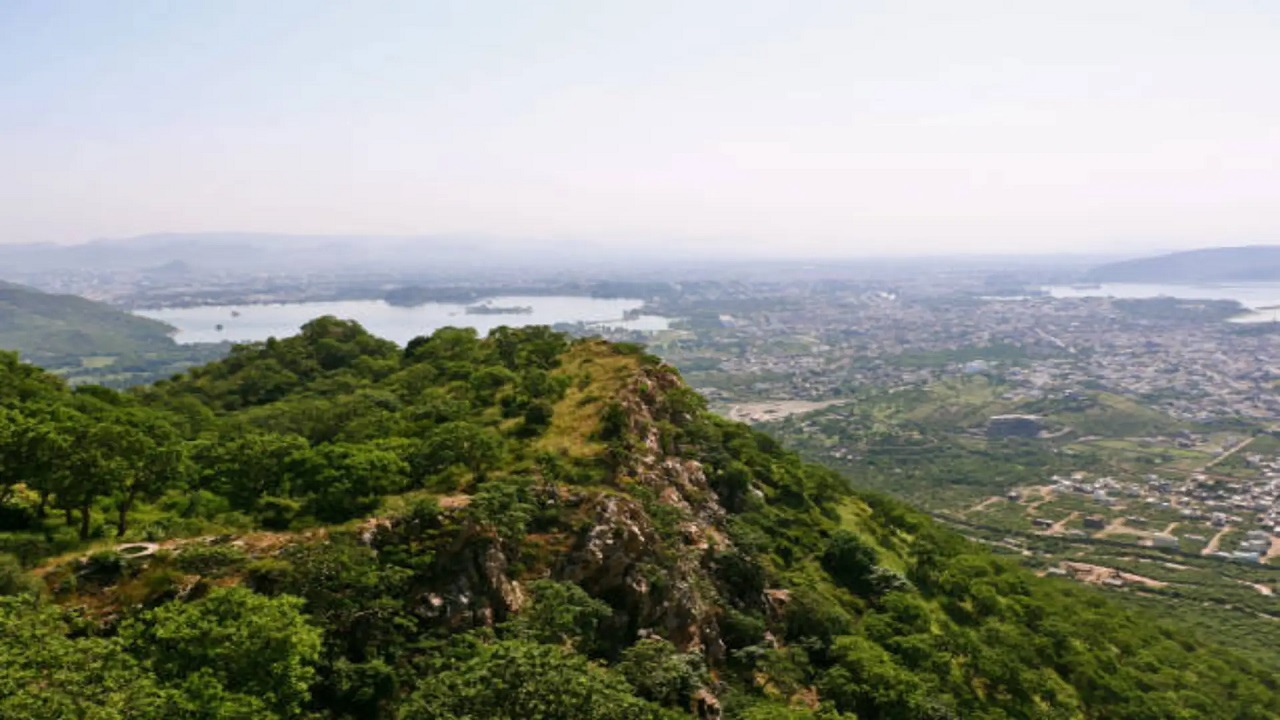Aravalli Green Wall Initiative: Reclaiming Ecology, Restoring Balance
Context:
On World Environment Day 2025, the Prime Minister of India will formally launch the Aravalli Green Wall Initiative to rejuvenate the ancient Aravalli range, one of the oldest mountain systems in the world. This initiative comes at a time when the Aravalli ecosystem faces intense pressure due to mining, deforestation, land degradation, and urban expansion. It also aligns with India’s commitments to combat climate change, land degradation, and fulfill its Sustainable Development Goals (SDGs) and Nationally Determined Contributions (NDCs) under the UNFCCC.
About Aravalli Green Wall Initiative
What is it?
-
A large-scale landscape restoration and afforestation programme across the Aravalli range, led by the Ministry of Environment, Forest and Climate Change (MoEFCC).
-
Designed as a centrally coordinated green barrier along the 700-km Aravalli stretch, it aims to tackle environmental degradation and desertification.
-
Inspired by global models like the Great Green Wall of Africa.
Objectives of the Initiative
-
Combat Land Degradation: Rehabilitate degraded lands and curb the westward expansion of the Thar Desert.
-
Restore Ecological Balance: Increase the region’s green cover, improve forest health, and preserve native biodiversity.
-
Support Climate Action: Enhance carbon sequestration potential under India's NDCs to fight climate change.
-
Water Resource Revival: Rejuvenate surface water bodies such as ponds and lakes to strengthen groundwater recharge.
-
Promote Public Participation: Engage local communities in greening efforts, ensuring long-term sustainability and livelihood generation.
Key Features of the Initiative
-
Area Covered: Targets 29 districts across Delhi, Haryana, Rajasthan, and Gujarat, which fall within or around the Aravalli range.
-
Nursery Establishment: Development of 1,000 nurseries using native and climate-resilient plant species.
-
Funding Sources: Supported through multiple schemes such as:
-
CAMPA (Compensatory Afforestation Fund)
-
MNREGA
-
State afforestation and rural development programs
-
-
Agroforestry and Pasture Development: Emphasis on integrating farming with forestry, promoting grazing lands and fodder security.
-
Water Body Rejuvenation: Revival of traditional ponds and lakes to restore the local hydrological cycle.
-
Integration with National Missions: Linked with campaigns such as ‘Ek Ped Maa Ke Naam’ for mass tree plantation.
-
Promotion of Eco-Tourism:
-
Development of nature parks, trekking trails, and eco-safaris to boost tourism and rural employment.
-
-
Implementation Timeline:
-
Phase I is targeted for completion by 2027.
-
A comprehensive action plan will be released during COP16 of the UN Convention to Combat Desertification (UNCCD) in Riyadh.
-
Significance of the Aravalli Range
States Covered
-
The Aravalli range spans Delhi, Haryana, Rajasthan, and Gujarat, extending over 670 km.
Geographical and Ecological Importance
-
Ancient Origin: Among the oldest fold mountain ranges in the world, formed during the Proterozoic Era (over 2.5 billion years ago).
-
Desert Barrier: Acts as a natural shield, preventing the Thar Desert from advancing into the National Capital Region (NCR).
-
Biodiversity Hotspot: Home to diverse species of flora and fauna, many of which are endemic or threatened.
-
Source of Rivers:
-
Banas and Sahibi (tributaries of the Yamuna)
-
Luni River (flows into the Rann of Kutch)
-
-
Mineral-Rich Zone: Known for deposits of copper, zinc, lead, and marble, contributing to the region’s economic and industrial development.
-
Fragile Ecosystem: Facing threats from illegal mining, urbanization, and deforestation, making conservation urgent.
Sub-Divisions of the Aravalli Range
-
Sambhar–Sirohi Range:
-
Includes the highest point, Guru Shikhar (1,722 metres), located in Mount Abu, Rajasthan.
-
-
Sambhar–Khetri Range:
-
Consists of discontinuous ridges, more fragmented due to erosion and geological shifts.
-
Conclusion: Greening the Aravallis for a Sustainable Future
The Aravalli Green Wall Initiative represents a strategic and ecological intervention to address land degradation, strengthen climate resilience, and enhance biodiversity conservation in one of India’s most critical ecosystems. With its integration into national climate goals and grassroots participation, it holds the potential to transform degraded landscapes into thriving green corridors, contributing to India’s long-term environmental security and sustainable development.




Comments (0)